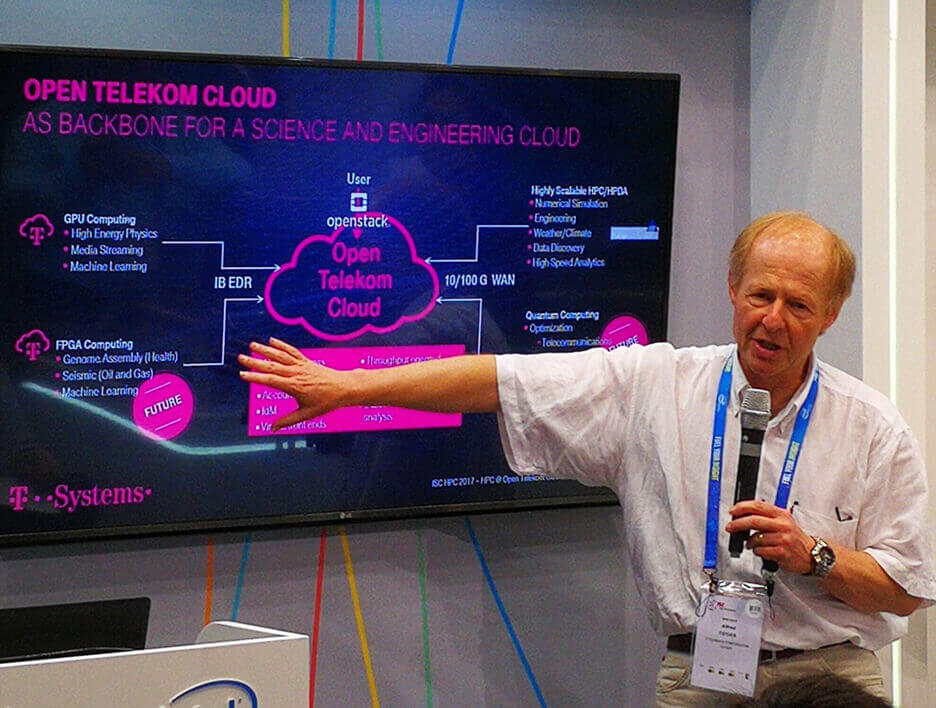In this article by high-performance computing expert Alfred Geiger you will read about,
- which different methods are available to implement high-performance computing with the public cloud
- how companies can find out which one best suits their particular application
- and why the Open Telekom Cloud is the best offer on many levels compared to other public clouds.
Which IT concept is the fastest way for companies to solve complex problems? A general answer is: with the cloud bursting principle, i.e. a clever combination of on-premises and high-performance public cloud computing resources. On-premises covers certain basic tasks, the scalable high-performance capacities from the public cloud are used as required for corresponding peak loads.
If you look under the hood, things get more complex. High-performance computing (HPC) from the public cloud offers a wide variety of options. Companies should therefore know some basic facts about this topic, because not every technology is equally suitable for every application.
